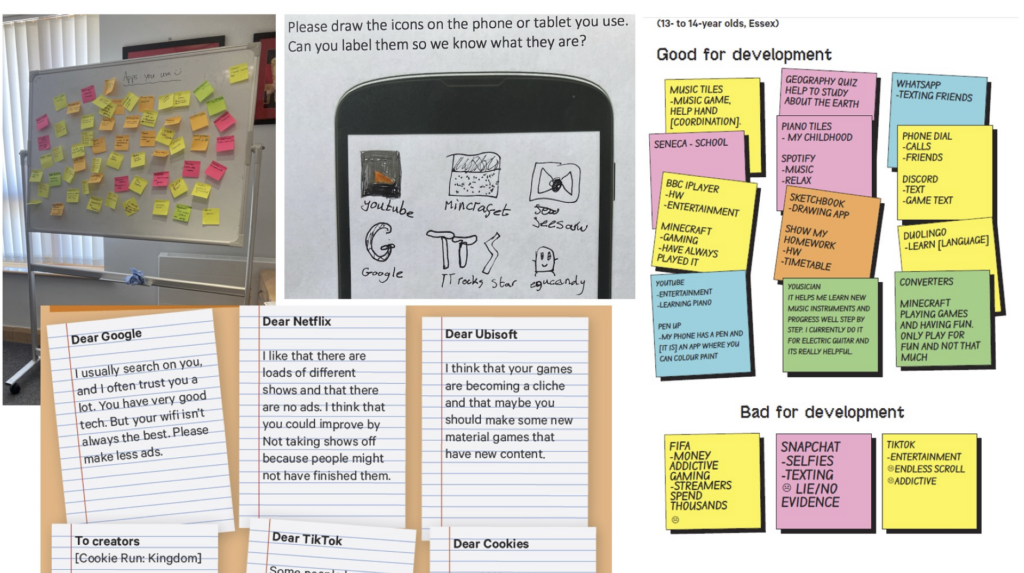How can we design the digital world in the best interests of children? What principles should guide innovators of digital products and services that may impact children’s lives? In the Digital Futures Commission, we asked ourselves, how can we translate the United Nations Convention on the Rights of the Child (UNCRC) into a tool that’s practical for designers and developers?

Digital technologies are part of the infrastructure of children’s daily lives. They are no longer optional for children but, indeed, crucial to their development and prospects. Yet digital spaces are proprietary, and business models are based on wide and deep data collection to monetise attention and identities. And yet too often, children remain invisible in the digital world, despite being one in three internet users worldwide. With the possible coming of the metaverse, it is ever more vital to find multistakeholder approaches to innovation that embed children’s needs and rights from the outset.
Our Child Rights by Design toolkit advances our ambition that all providers of digital products and services impacting children should keep children in mind throughout their work and embed children’s rights into their provision.
Its 11 principles are distilled from the articles of the UNCRC and the text of UN Committee on the Rights of the Child’s General Comment No. 25, which sets out how children’s rights should be implemented in relation to the digital environment – including by businesses.
How we developed Child Rights by Design
We decided to build on the “by design” approaches now being developed across public, private and third sectors. These are promising and important. But innovators and policymakers pay most attention to the ‘hygiene’ factors of safety and security, sometimes privacy too, while tending to neglect children’s positive rights (including their civil rights and freedoms), as well as the crucial balance among their rights (captured in the idea of children’s best interests as a primary consideration, which is fundamental to the UNCRC).
To create the toolkit, we consulted innovators, practitioners, and experts to make develop the guidance and make it practical. We also drew on the collected wisdom of many rights-based, ethical, and value-sensitive organizations and a consultation with children and young people from different parts of the country. We also drew on the combined wisdom of about 100 relevant policy documents, national and international.

After reflecting on lessons learned from our two use cases, Playful by Design and Beneficial Uses of Education Data, to cut a long story short, we mapped all the articles of the UNCRC, and all the provisions of General Comment No.25, to distill 11 design principles.
What’s included in the Child Rights by Design toolkit?
For each of the 11 principles, the guidance offers:
- An account of how specific child rights apply to digital products and services
- Distilled insights from expert sources and links to relevant legislation
- Reflections from children and young people
- ‘Stop and think’ questions to ask, mapped to the Design Council’s ‘Double Diamond’ process
- Suggested sources of design inspiration and tools
Working with designers and developers, we mapped the principles onto the Design Council’s Double Diamond – we have one of these for each principle, highlighting ‘stop and think’ questions for each phase of Discover (to get insight into the problem), Define (to decide what to build), Develop (to try potential solutions) and Deliver (to identify solutions that work). The toolkit concludes with a checklist – to help keep all the principles in mind, figure out the steps to take, and identify your to-do list!

Who is Child Rights by Design for?
Any and all innovators of digital products and services used by or likely to impact on children:
- By innovators, we include designers, developers, product managers, executives, marketers, UX (user experience) researchers and professionals in the legal, policy or planning departments of start-ups, mid-sized companies and major corporates, as well as those working on standards, compliance and procurement in the public, private or third sector. A ‘by design’ approach must engage the whole organisation, from the CEO onwards, although we especially have designers in mind.
- We include digital products and services intended for children and the many products and services that children use – perhaps unnoticed – as part of a broader market. We also include products and services that children don’t use directly but that impact them (cameras in public places, school information management systems, health databases or parental control tools). This includes a host of products and services across the value chain that need to start thinking about children.
Designing for child rights isn’t easy. But retrofitting design to respect rights after a product is developed can be difficult and expensive. As we say in the report, Child Rights by Design shouldn’t be seen as a tick-box exercise but an exciting road map. For although we don’t promise all the answers, we are confident of the direction of travel.
We hope you agree with us that, taken together, these 11 principles indeed answer the question of what good looks like!
For more information:
- An overview of the Digital Future Commission’s work and Final Report
- Child Rights by Design (blog; report – two page view, single page view; microsite)
- You can view the webinar presenting Child Rights by Design here.
An earlier version of this post was published at https://digitalfuturescommission.org.uk/blog/child-rights-by-design-our-guidance-for-innovators-toolkit-is-finally-here/

Sonia Livingstone DPhil (Oxon), OBE, FBA, FBPS, FAcSS, FRSA, is a professor in the Department of Media and Communications at the London School of Economics and Political Science. Taking a comparative, critical, and contextualized approach, her research examines how changing conditions of mediation reshape everyday practices and possibilities for action. She has published 20 books on media audiences, children and young people’s risks and opportunities, media literacy, and rights in the digital environment, including Parenting for a Digital Future: How hopes and fears about technology shape children’s lives (OUP 2020). Since founding the EC-funded 33 country “EU Kids Online” research network, and Global Kids Online (with UNICEF Office of Research-Innocenti), she has advised the Council of Europe, European Commission, European Parliament, UN Committee on the Rights of the Child, OECD, ITU, and UNICEF. She chaired LSE’s Truth, Trust and Technology Commission and is currently leading the Digital Futures Commission with the 5Rights Foundation.

Dr. Kruakae Pothong is a Researcher at 5Rights and visiting research fellow in the Department of Media and Communications at London School of Economics and Political Science. Her research spans the areas of human-computer interaction, digital ethics, data protection, Internet and other related policies. She specialises in designing social-technical research, using deliberative methods to elicit human values and expectations of technological advances, such as the Internet of Things (IoT) and distributed ledgers.